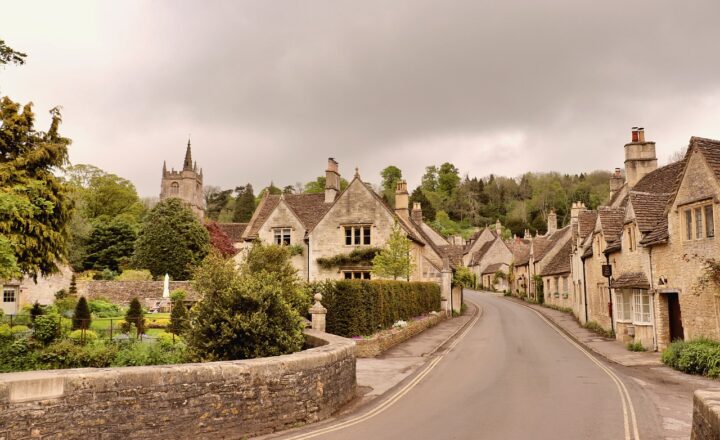The Mafia’s Hold on Hollywood: A Look at Mob Influence on the Big Screen
November 15, 2024

The connection between organized crime and Hollywood is as old as the film industry itself. From the early days of cinema, the Mafia has had its hand in the action, influencing not only the creation of films but also the characters and narratives that dominate the silver screen. This article delves deep into the impact the Mafia has had on Hollywood, exploring crime’s portrayal, the inherent risks to filmmakers, and the complex relationship between reality and the cinematic world.
1. The Historical Context of the Mafia in America
The roots of the Mafia in America trace back to the late 19th and early 20th centuries as waves of Italian immigrants arrived on American shores in search of a better life. However, many of these immigrants faced racism and economic hardship, leading some to seek power and protection through organized crime. The Sicilian Mafia, known for its code of silence (omertà) and strict hierarchies, quickly established operations in major American cities, particularly New York and Chicago.
The rise of the Mafia coincided with the prohibition era (1920-1933), which provided a lucrative opportunity for bootlegging and illegal liquor distribution. This period heralded the Mafia as a powerful entity, not only in the criminal underworld but also as an influence in various sectors, including labor unions and politics. Thus, by the time Hollywood began to grow as a powerful entity in the 1920s, the Mafia was already well entrenched in society.
2. Early Representations of the Mafia in Cinema
Films featuring the Mafia were common even in the early days of Hollywood. Movies like “The Godfather Part II” and “Scarface” later became iconic representations of mob culture, but earlier cinematic portrayals were also significant. In the 1930s, films like “Little Caesar” and “The Public Enemy” depicted gangsters with a mix of glamor and violence, appealing to the public’s fascination with crime.
These films portrayed mobsters as tragic heroes or ruthless villains, feeding into a narrative that emphasized their allure and power. It was an era that sparked a romance with organized crime, prompting audiences to reflect on issues of class, power, and morality. However, these representations also drew the ire of actual mobsters, who didn’t appreciate the negative light cast upon their operations.
3. The Influence of the Mafia on Hollywood Productions
The most gripping aspect of the Mafia’s relationship with Hollywood is the direct influence they exerted over film productions. There are numerous accounts of mobsters and crime families trying to control how they were portrayed on screen. Major studios could not risk losing access to lucrative markets or incurring the wrath of mobsters who could retaliate against them.
Rumors have circulated about the Mafia’s involvement in various projects, with filmmakers sometimes seeking their approval to avoid threats. Notorious figures like Sam Giancana and John Gotti were known to have interests in certain films, and they often demanded a certain degree of creative control over the portrayal of their lives, or those resembling them. This led to a complicated dance where filmmakers had to balance artistic vision with the demands of the criminal underworld.
Additionally, many actors and directors in Hollywood have had unique interactions with the Mafia. Frank Sinatra’s alleged associations with organized crime figures are well-documented—leading to speculation about how much his connections influenced his career, roles, and relationships within the industry.
4. Iconic Films and the Mafia Narrative
Several films have become synonymous with Mafia culture, drawing audiences into a fascinating realm defined by loyalty, betrayal, and a unique code of ethics. “The Godfather” trilogy stands out as the pinnacle of cinematic exploration of organized crime. Here, director Francis Ford Coppola masterfully intertwines themes of family dynamics with the intertwining fates of characters entrenched in criminal enterprises.
Similarly, films like “Goodfellas” and “Casino”—directed by Martin Scorsese—offered gritty, realistic insights into mob life. These films highlight not only the glamour associated with mobsters but also the brutal realities behind that life. For many, the characters portrayed in these films reflect the complexity of human nature, raising profound questions about morality and success.
However, as audiences increasingly accepted and even celebrated these portrayals, gangsters became cultural icons. This transformation resulted in the glorification of crime, blurring the lines between admiration and condemnation in public consciousness.
5. Modern Cinema and the Mafia
The fascination with the Mafia has continued into modern cinema, where filmmakers still seek to explore the intricate relationships and socio-economic factors that contribute to organized crime. While some films may glorify the Mafia, others take a critical approach, examining the moral ambiguities and the personal costs involved.
Recent forays into the genre, such as “The Irishman,” showcase not just the violent actions taken by mobsters but also the long-term consequences of those choices. By addressing the brutality of these criminal enterprises alongside personal remorse, such films transcend simple storytelling and provide profound societal commentary.
Furthermore, with the advent of streaming platforms, there is a more substantial appetite for nuanced storytelling. Series like “The Sopranos” have elevated the portrayal of mobsters into deeper character studies, allowing viewers to explore their humanity, often drawing them in with complex psychological narratives.
6. The Legacy of Mafia Influence in Hollywood
The legacy of the Mafia’s influence in Hollywood is unmistakable, leaving behind a mixed bag of glorification and cautionary tales. While organized crime has inspired countless stories, it has also sparked conversations about morality, ethics, and the real-world implications of how crime is portrayed in media.
As filmmakers continue to navigate this treacherous terrain, they must balance storytelling with authenticity, often straddling the fine line between depiction and endorsement. This balance is crucial as audiences become increasingly aware of the real-life consequences behind the tales of mob life.
Conclusion: The Complicated Dance Between Crime and Cinema
The intersection of the Mafia and Hollywood serves as a compelling case study of how organized crime can shape cultural perceptions and narratives. While the allure of the mob continues to entice both filmmakers and audiences, it is the responsibility of creators to consider the broader implications of their work.
In essence, the Mafia’s hold on Hollywood reveals the layers of human experience—one filled with ambition, betrayal, and decay. It poses crucial questions about morality, fame, and the cost of power—a narrative as captivating in real life as it is in the elaborate worlds of cinema.
Through understanding this relationship, one can appreciate not only the art of filmmaking but also the immense influence that real-life stories and characters have in crafting the tales we see on screen today.







